The human sense of smell is known to evoke powerful emotional reactions. Scientific data uncovered in many university studies and surveys have carefully monitored responses to olfactory stimuli and concluded that our likes and dislikes of many diverse products are based purely on our emotional associations with them.
This factor is not the result of even the consummate skills of our perfumers at Alpha Aromatics, and is totally based in human biology; namely the olfactory receptors that are directly linked to the part of the human brain known as the limbic system, which control memory and emotion.
How Fragrance Impacts Perception Of Shampoo Products
The importance of fragrance in shampoos lies in terms of how the product is perceived by the consumer. While in the past washing one’s hair may have been a simple task perfunctorily performed, in modern times hair care has become a multi-sensory experience.

The mister-or-miss-feel-good desire inherent in the heart of every consumer must be appeased, and this can only be accomplished via the sophisticated placement of a chosen scent that is fully integrated into the product line.
Studies have indicated that consumers tend to like what they know and they have been known to give higher “pleasantness” ratings to smells which they can readily identify. A typical female consumer, if asked how she likes her new shampoo, is likely to answer: “It smells great.” Because she believes it smells great, she also believes that it will perform well on her hair.

The modern consumer is assailed every day with shifting fads in both fine fragrance and hair care; so much so that the two have become inextricably linked to the same fashion trends. This constant assault of the senses often results in some fickleness among consumers every time a new shampoo is introduced to the hair-care landscape.
The Receding Line Between Salons and Shampoos
Shampoo products have exploded across the hair care sector of the personal products industry, as the frequency with which women now wash their hair has increased noticeably.
The once steady and definitive line separating salon and retail shampoos has greatly diminished. While the salon visit remains a constant and vital ritual for modern women, it is no longer an exclusive venue for purchasing upscale hair-care products, as many are now available in specialty stores and discount chains.
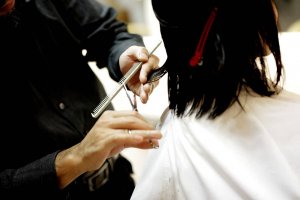
Salon stylists have recognized that fragrance is an essential ingredient in the products they use because with the repeated use of only one scent, there is alway the risk that it will become routine and boring. It is for this reason, perhaps, that salon shampoo brands at least appear to make bold and adventurous statements by touting ingredients that include: botanicals, exotic plants and tropical fruits blended with musks, and florals.
Enhancing the salon experience and eliminating ‘olfactory fatigue’ can be achieved by utilizing a fragrance that is not overused such as a floating, tropical floral scent. Blends that are still fresh and new include: sharp, fresh citrus notes with orange flower, rosemary and chamomile, honeyed pear and lemongrass.
Other examples include: fruit and green apple notes, coconut accents with mango, and considerable amounts of musk and citrus blended into the florals. Marketers of shampoos for salons use their scents to build and reinforce brand identity.

According to Carlos Linares, R&D director, Alberto-Culver, “Where the brand’s identity is integral to the product performance, the fragrance is kept as part of its brand identity, as while there are some deviations in line extensions, a tie with the original must remain.”
Salon shampoos and other hair-care products are often touted to contain and therefore thought to have a higher concentration of nourishing ingredients. This concept is heavily reinforced by chic, shiny and distracting packaging, which collectively addresses a marketing phenomenon known as “label bias.”
This belies the fact that there are many drugstore products that deliver nearly identical benefits, whose fragrances have been carefully crafted by master perfumers. Subliminal conditioning silently screams that cheaper products couldn’t possibly work better than salon shampoos.
Creating Fragrances For Shampoos Versus Perfumes
The physical process of creating wonderful smelling shampoos and memorable formulations is the same in the sense that essential oils are extracted from flowers, fruits and other plants, (everything from wild strawberry and dewy melon to jasmine blossoms and cool ginger) and then dissolved into the shampoo. The success of a shampoo scent also relies on notes as does a perfume, but their delivery is slightly different.
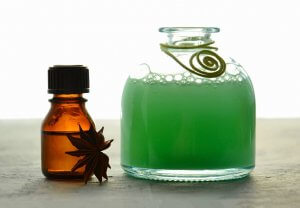
The small molecules that comprise top notes are activated as soon as the warm water hits. The slightly heavier molecules that comprise the heart notes round out the fragrance and perfume hair during the rinse cycle. Base notes, which are the largest group of molecules in the scent, come into play when hair is dried. These notes in tandem remain in the hair and retain its fragrance throughout the day.
One of the main differences between the creation of a perfume and the development of a fragrance destined for a shampoo lies in the varying consumer expectations of the final product. Another factor concerning the process itself is understanding that selected fragrance notes can be affected by and interact negatively with diverse cleansing agents. This can disrupt one of the most important aspects of a successful shampoo; namely, the way its scent behaves over the passage of time.
Some Relevant Studies and Statistics
Although there is convincing evidence based on scientific data that pleasing fragrances improve mood and a sense of well-being, recent studies have indicated that expectations about an odor, rather than any direct effects of exposure to it, may sometimes be responsible for the mood and health benefits reported by participants.
Studies involving experiments using placebos (odorless sprays) have indicated that even though subjects do respond to odorless placebos, which they believe are fragrances, the effect of the real thing is significantly greater.
According to Eric Spangenberg, a pioneer in the field of studies involving scent marketing and dean of the Washington State University College of Business: “You need that critical je ne sais quoi known as “congruity” – how well an aroma fits the environment where it is used. People need to be cognizant of the possible effects of making it incorrect.” Creating the proper scent for the proper environment is an art form that is best left to master perfumers.
Here are 11 things you probably didn’t know about fragrance creation.
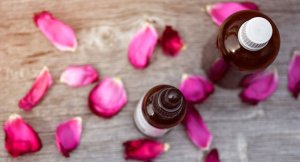
The researchers conducted several experiments and noted that one group of about 100 people who were shopping in the presence of a simple scent on average spent 20% more money on more items.
Spangeberg states the importance of understanding how a scent affects consumers. “Most people are processing scent at an unconscious level, but it is impacting them. The important thing from the retailer’s perspective and the marketer’s perspective is that a pleasant scent isn’t necessarily an effective scent.”
In a study involving a consumer test of shampoos, participants ranked a particular shampoo last on general performance in an initial test, and ranked it first in a subsequent test after its fragrance had been altered. In the latter test, participants were certain that the shampoo was easier to rinse out, foamed better and left the hair more glossy, albeit only the fragrance had been changed.
Alpha Aromatics and Some Fragrance Selections
Our perfumers and researchers at Alpha Aromatics have been hard at work creating some of the world’s finest fragrances for more than seven decades. All of our formulations are born, designed and created within our 85,000 square foot facility located in suburban Pittsburgh where our laboratories are equipped with the most cutting edge tools in the field of industrial science that money can buy.
We are dedicated to designing and supplying the world’s finest, high quality scents, while meeting the guidelines and quality standards set by The Research Institute for Fragrance Materials (RIFM), International Fragrance Association (IFRA), Oregon Tilth, International Sanitary Supply Association (ISSA) and the Natural Products Association (NPA) and the International Organization of Standardization.

The following are some masterful samplings of the delightful fragrances our team has made exclusively for use in shampoos for both men and women.
Pink Tangelo Orchid
Hinting of tropical climes and forests primeval, this inviting fragrance opens with a top note featuring tart, tangy and uplifting grapefruit, juicy, zesty tangelo and the grandfather of citrus fruits; namely dry, acidic and aromatic citron.
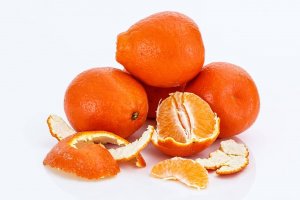
These elements soon meld into a heart note comprised of fresh, sugary and floral orange blossom, intense and captivating jasmine, romantic rose, and powdery, vanilla like orchid. Creamy, buttery sandalwood, earthy, potent and woody oak moss and sensual passionate musk form the base notes that complete this scent.
Apple Blossom Teak
A top note of slightly sweet and dense pear, vanilla-like and gingery, tropical mango, crisp apple and sugary mildly rich persimmon opens this fruity/floral scent tinged with woody nuances that is loved equally by men and women.
A floral heart note soon follows comprised of powdery, woody violet, sweet, rich jasmine petals and faintly sugary and elusive begonia blossoms. The fragrance completes with a base note of precious woods, which is marked by warm amber, earthy musk and lush and woody elements of pine and cedar.
Wild Lily Cassis
This comforting, citrusy, green and subtly Far Eastern fragrance opens with a top note hallmarked by luscious orange, succulent, honey-like mandarin, fresh green, crisp apple and sweet, dark, berry-like cassis.
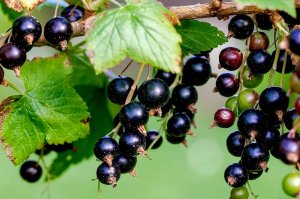
These elements soon surrender to a floral heart note comprised of woody, sugary, refreshing and crunchy juniper, rich, intense jasmine, mellow, smooth iris and delicate, soft and green lily of the valley.
A base note featuring warm and rich amber, flavorsome tonic bean with its multiple nuances of vanilla cinnamon, saffron, almond and cloves, elegant vanilla and sensual musk complete the fragrance.
Honey Nectar Pomegranate
This tropical, dreamy blend is an olfactory paradise opening with a top note characterized by subtle, green, sweet and sour, pomegranate and exotic nuances of succulent pineapple, velvety, aromatic peach and milky, lush and sugary coconut.
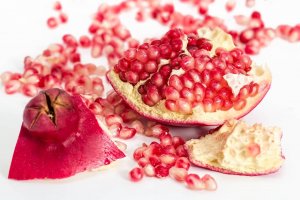
These aspects soon give way to a heart note featuring light, floral and bitter neroli, romantic rose, and delicate, green and sweet lily-of-the-valley. The fragrance finishes with a base note of aged, mossy oak, golden, sugary and rich honey nectar and elegant vanilla.
In Conclusion
If you represent or own a company manufacturing shampoos and other hair care products for the modern consumer, consider contacting our team today and see how our expertise and marketing judgement can enhance both your brand and that all-important and sometimes elusive bottom line.
Photo Credits: Pixabay
 alpha aromatics®
alpha aromatics®